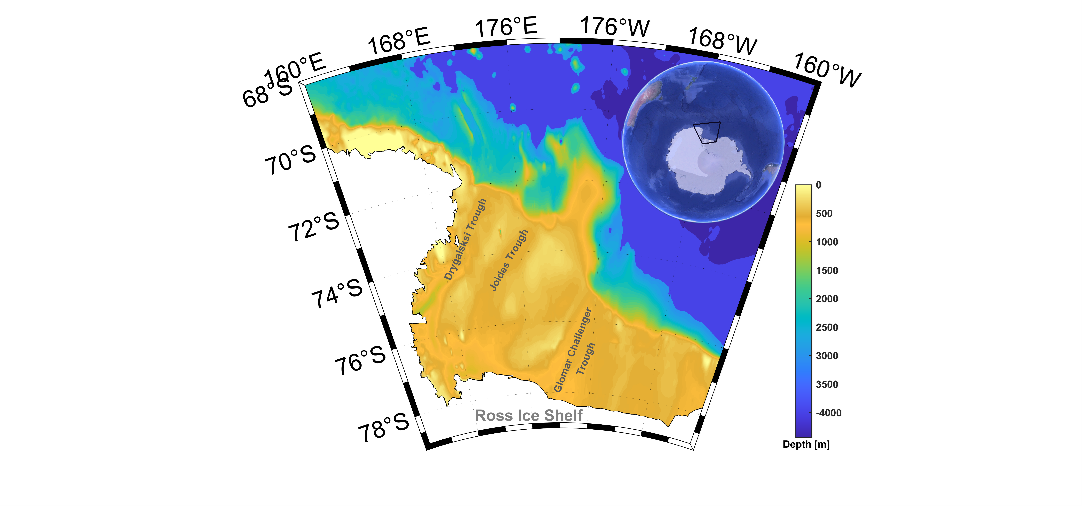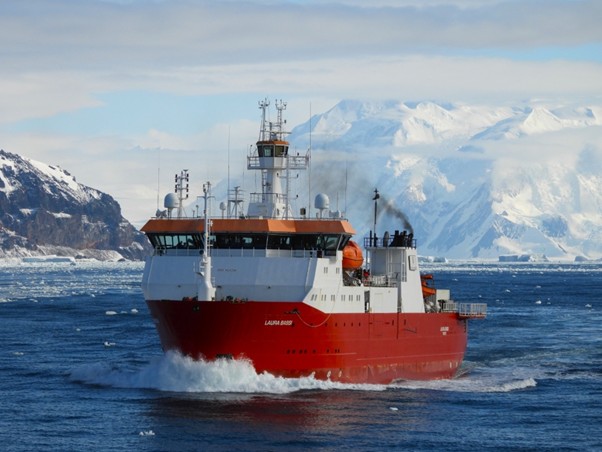Exchange Across the Ross Sea Shelf: The Glomar Challenger Trough Exchange Experiment

The exchange of water across the Ross Sea continental shelf break sets the water properties in the global deep ocean, on the Ross Sea continental shelf and within the Ross Ice Shelf cavity. Observations in the region are limited, however, and there are no direct measurements of the exchange. The Ross Sea shelf is the source of much of the Antarctic Bottom Water that fills 40% of the global ocean, and the Ross Sea contribution is changing in volume and salinity suggesting a response to changing conditions on the shelf. As the dense water flows off the shelf, warmer Circumpolar Deep Water from the deeper ocean flows on to the shelf to replace it, moving heat towards the glaciers and ice shelves of the Ross Sea. Most of the exchange occurs in three troughs or indentations in the shelf that guide the water across the shelf break. The lack of direct estimates of the exchange through these troughs, and an understanding of what controls the exchange, limits projections of future water properties in the deep ocean and on the Ross Sea shelf.
A multi-national effort is now in place to measure the exchange of water between the Ross Sea shelf and the ocean through the Glomar Challenger Trough. The dense water flowing from this trough is thought to be the second largest contribution to the Antarctic Bottom Water sourced from the Ross Sea and has a direct path into the Pacific Ocean. In February 2025, the Italian research vessel, Laura Bassi, deployed three moorings across the trough built and instrumented by the New Zealand Antarctic Science Platform, Southampton University, the British Antarctic Survey and the Italian Antarctic programme. Support for the SOOS-endorsed Glomar Challenger Trough Exchange mooring array came from Antarctic programmes in Italy (MORSea), New Zealand (ASP) and the UK (FRESH) with additional support from the EU/UKRI joint programme OCEAN:ICE.
The measurements from the Glomar Challenger Trough Experiment will complete observations across all three troughs. Over the past four years, the New Zealand Antarctic Science Platform and Italian Antarctic Project MORSea programmes have joined efforts to measure the transport and water transformation in the Drygalski and Joides troughs in the western Ross Sea. The process studies from these arrays are being combined with measurements from single point moorings, maintained over many years in the troughs, to create a long time series of exchange.
The moorings across the Glomar Challenger Trough will be recovered in January 2026. These data, together with the observations across the Drygalski and Joides Troughs, will then allow us to make the first full assessment of the transport across the shelf break in the Ross Sea and how it varies seasonally and with the tides.








